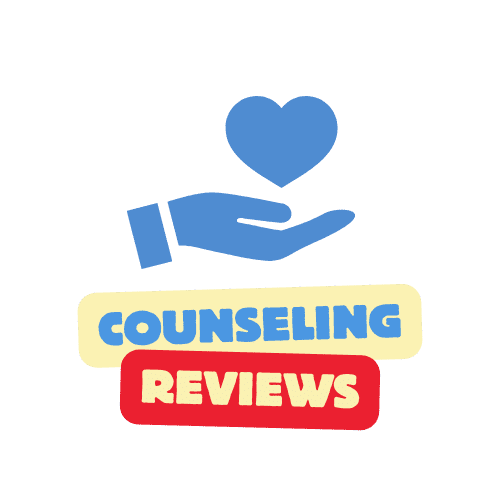We all daydream from time to time. Maybe we’re imagining what it will feel like when we first step on the beach for our summer vacation. Or, perhaps we find our minds wandering to fun times spent with our children when we’re in the middle of a long meeting.
When daydreaming is occasional, it generally doesn’t cause any problems. We quickly realize our minds have wandered, and we’re able to refocus. However, maladaptive daydreaming can be harder to control, causing problems with focus and productivity.
What Is Maladaptive Daydreaming?
Maladaptive daydreaming refers to instances in which we daydream to the point that it interferes with daily functioning. When daydreaming is maladaptive, it becomes quite immersive, so we get so lost in it we’re unable to be productive.
Maladaptive daydreaming can become compulsive, to the point that we lose control over it. When this happens, we lose our ability to focus on our tasks or engage in real-life activities.
Symptoms of Maladaptive Daydreaming
Before diving into solutions for overcoming maladaptive daydreaming, it’s important to understand its symptoms. Consider the signs and symptoms of maladaptive daydreaming below:
- Daydreaming excessively
- Having a difficult time concentrating
- Withdrawing from reality while daydreaming
- Becoming intensely emotionally involved in daydreams
- Becoming overly excited or fearful during daydreams
- Neglecting important life responsibilities due to time spent daydreaming
- Struggling to sleep because of daydreaming, or waking up frequently during the night to fantasize
- Using daydreaming as a way to escape from real-life stress and painful emotions
- Feeling guilty or embarrassed about the amount of time spent daydreaming
- Having a hard time separating fantasy from real life
Ways To Stop Maladaptive Daydreaming
There is nothing wrong with occasionally allowing your mind to wander. There’s also no harm in occasionally fantasizing about a happy time or setting. In fact, during times of stress, briefly fantasizing about a “happy place” can be quite beneficial.
However, when daydreaming is excessive and prevents you from participating in daily life, it becomes maladaptive. Consider the strategies below for overcoming maladaptive daydreaming.
Identify Your Triggers
When I’m working with clients in professional practice, I often tell them how important it is to recognize triggers for unhealthy or unhelpful behavior. Once they recognize their triggers, they can find better ways to cope with these situations.
For instance, if stress is a trigger for you, cope by taking deep breaths or carving out more time for self-care. Alternatively, if you tend to daydream more often when you’re anxious or sad, schedule a 20-minute walk outdoors, and then return to whatever is on your to-do list for the day.
Set Boundaries Around Daydreaming
Daydreaming occasionally isn’t necessarily unhealthy. If you’re struggling with maladaptive daydreaming, allow yourself specified windows of time to engage in this behavior.
You might consider carving out 10 minutes each morning to daydream about the future. Or, you could permit yourself to fantasize about something while you’re in the bath or shower. What’s most important is setting limits, so daydreaming doesn’t interfere with other important areas of life.
Practice Mindfulness
Mindfulness teaches you to be more aware of the present moment, so it can be helpful if you’re struggling with a wandering mind. Common mindfulness activities include yoga and meditation. You can also practice mindfulness through grounding exercises, such as naming things you see, hear, and feel.
Mindfulness has been linked to healthy coping during moments of stress, so it can be beneficial if you find yourself daydreaming as a way to cope.
Online Counseling Treatments
Sometimes, you may need professional support to cope with maladaptive daydreaming. This is especially true if you’re daydreaming in response to poor coping mechanisms or underlying trauma.
Fortunately, you can get professional help right from home through online counseling. I recommend Headspace, Calm, and BetterHelp. These platforms will link you to licensed counselors who can help you develop coping skills and overcome underlying mental health problems.
Meet Your Underlying Needs
Sometimes, daydreaming happens due to boredom or overall lack of stimulation. Meet your needs in other ways by making time for physical activity and other habits you enjoy.
Explore your interests, and you may find that you no longer daydream at inappropriate times. Join a gym or club, learn a new skill, and attend social outings. You won’t need to find an escape from reality when you feel fulfilled in daily life!
Does Maladaptive Daydreaming Ever Stop?
Maladaptive daydreaming probably won’t magically stop on its own; however, you can learn strategies to manage it. Since you’re reading this article, you likely have some self-awareness of the problem. This is a good sign, since being aware of the problem is the first step toward fixing it.
Once you’re aware of the problem, you can take steps to overcome it. Identifying triggers, setting boundaries, and practicing healthy coping strategies can help you change your habits. There is no shame in reaching out for counseling if you need some extra support.
FAQs
Explore the answers to some commonly asked questions below to learn more about maladaptive daydreaming.
Is There a Test to Diagnose Maladaptive Daydreaming?
Maladaptive daydreaming technically isn’t a mental health condition in the DSM-5, so there is no formal test to assess it. However, researchers have developed standardized scales that clinicians can use to assess symptoms of maladaptive daydreaming.
One example of a scale used to assess maladaptive daydreaming is the Maladaptive Daydreaming Scale (MDS), developed by Dr. Eli Somer and colleagues. The MDS consists of a series of questions designed to assess various aspects of maladaptive daydreaming behavior.
How Do I Stop Myself From Daydreaming?
There are several strategies that can be beneficial for reducing daydreaming. You can practice mindfulness to become more attuned to the present, or use stress management activities like deep breathing. It’s also helpful to identify daydreaming triggers and set boundaries around daydreaming. Once you identify triggers, you can manage them through healthy coping strategies.
Is Maladaptive Daydreaming ADHD or OCD?
Research shows that maladaptive daydreaming is linked to symptoms of ADHD and OCD.
Why Do I Maladaptive Daydream So Much?
There can be several underlying causes for maladaptive daydreaming. Some people may use daydreaming to cope with stress or the symptoms of a mental health condition like depression or PTSD. In other cases, maladaptive daydreaming may be a way to escape from painful emotions. For those who have ADHD, it can be a result of difficulties with regulating attention. Some people are simply incredibly creative and may find themselves fantasizing excessively.
Conclusion
Daydreaming isn’t all bad, but when it becomes maladaptive, it can be excessive. Maladaptive daydreaming can involve intense fantasies that make it difficult to concentrate and participate in real life.
Fortunately, with self-help strategies and professional support, you can overcome this behavior. I have seen many clients overcome unhelpful habits by learning healthy coping skills and reaching out for counseling.
Sources:
3)https://link.springer.com/article/10.1007/s12671-013-0261-3





